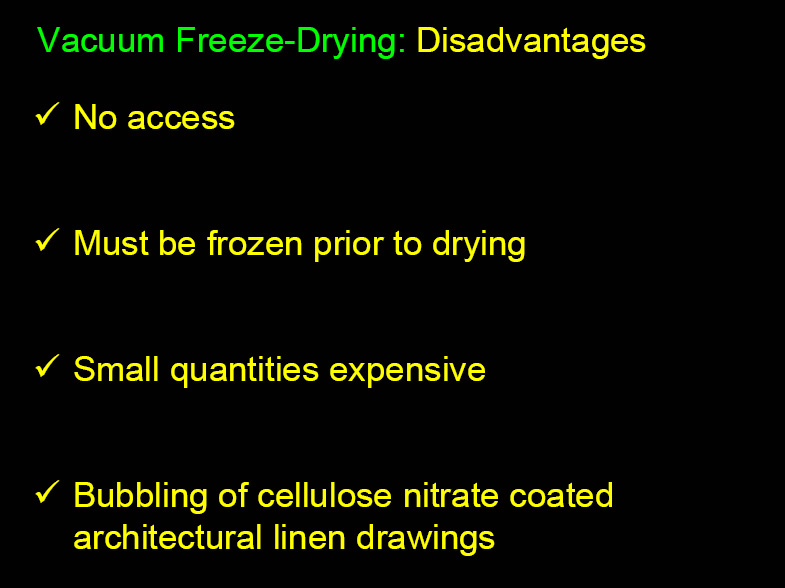
Comparison of Drying Methods
Vacuum Freeze-Drying: Advantages
- Vacuum freeze-drying is the drying method of choice for large quantities of wet materials.
- It results in the least amount of distortion, precluding the need to re-house or relabel most materials.
- Freezing immobilizes water to minimize corrosion from metal fasteners and on-going running or bleeding from soluble media.
- Coated papers do not stick to one another when vacuum freeze-dried.
- Even items enclosed in plastic need not be removed from original housings or enclosures, so there is less chance for loss of original order
Vacuum Freeze-Drying: Disadvantages
- While advantages generally outweigh disadvantages, vacuum freeze-drying also has downsides.
- Access to materials while frozen or during drying is not possible. Your materials may be placed with records belonging to others in the drying chamber, and ownership confusion may result.
- While the cost for freeze-drying appears comparable to other processes, materials must be kept frozen during transport and these associated costs may make freeze-drying small quantities of materials expensive.
- Increased delamination in cellulose nitrate coated architectural drawings was noted.

